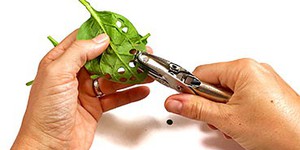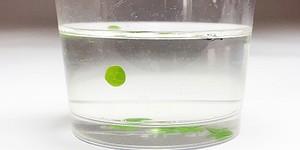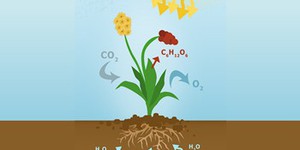Measure Photosynthesis with Floating Leaves | Science Project
Want to learn more? Check out these other resources:
STEM Activity
152 reviews
Do you know how plants get the energy they need to grow and reproduce? They do not eat like humans and animals do; they make their own food with a process called photosynthesis. During photosynthesis, plants convert light, water, and carbon dioxide from the air into oxygen and sugars. In this activity, you will be able to observe the oxygen production in leaves by doing a floating leaf disk experiment. You can also find out how quickly plants produce oxygen, and what variables affect…
Read more
Lesson Plan
Grade: 6th-8th
3 reviews
Plants carry out photosynthesis to produce sugars that they need as an energy source to live and grow. During photosynthesis, oxygen—a gas that many living beings need to survive—is released. This makes photosynthesis one of the most important biological processes on Earth. In Part 1 of this lesson plan, students will utilize the floating leaf disk assay to demonstrate the production of oxygen gas during photosynthesis. They will then continue to design and conduct their own…
Read more
NGSS Performance Expectations:
- MS-LS1-6. Construct a scientific explanation based on evidence for the role of photosynthesis in the cycling of matter and flow of energy into and out of organisms.
Have you ever seen a (non-carnivorous) plant eat? Probably not! Plants do not get the energy they need from food, but from the sunlight! In a process called photosynthesis, plants convert light energy, water, and carbon dioxide into oxygen and sugar. They can then use the sugar as an energy source to fuel their growth. Scientists have found an easy way to measure the rate of photosynthesis in plants. The procedure is called the floating leaf disk assay. In this plant biology project, you can…
Read more
Explore More Resources Like This
Area of Science
Plants provide us with so much — oxygen to breath, food to eat, materials to make clothing and paper, and beautiful flowers and leaves to admire! How can plants be so diverse and survive in so many kinds of climates? How do they know how to grow towards the sun? Why do some plants not have seeds? Explore the amazing and beautiful world of plants.
…
Read more
Area of Science
As humans we are part of the environment. With over 7.5 billion of us on Earth, our combined actions also have a big impact on the environment. As long as we are aware of the impact, we can do things as individuals, and working together as groups, to lessen the detrimental impact of billions of people. Explore important topics like air quality, water quality, the effects of climate change, and many others to make informed decisions about caring for our planet.
Read more








